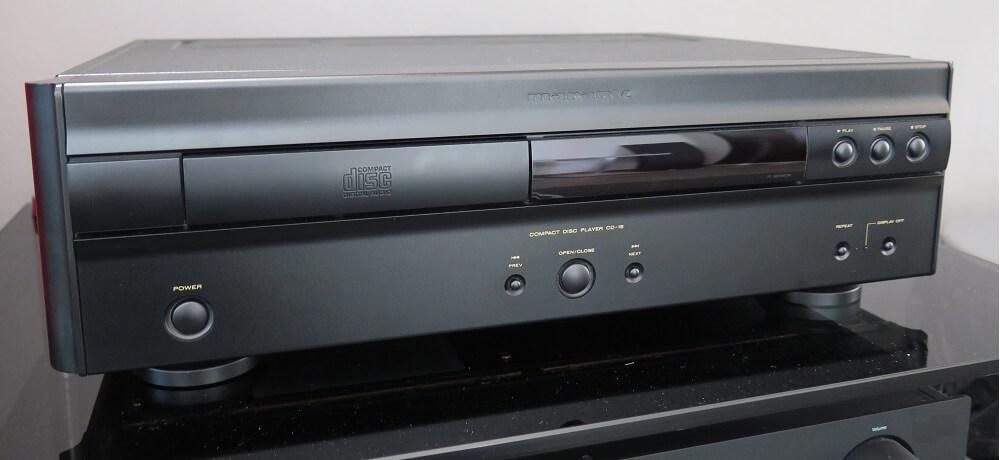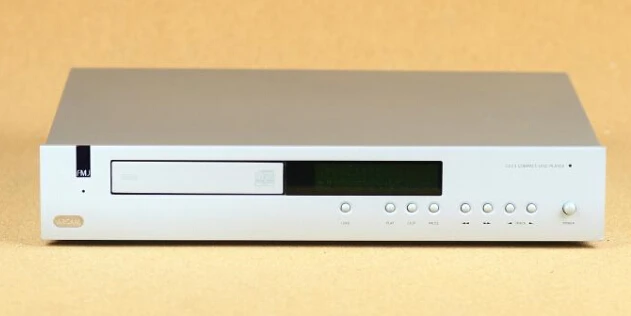Common sense would have you think that CD players have only improved over time, and that any CD player from 1994 will beat out any player from 1989. Perhaps this is accurate in terms of the transportation sections. And this might even be true for D/A converters…
Nonetheless, in my view, there are a few “vintage” players in particular that have stood the test of time despite the passing of entire generations.
The Marantz CD-12, the company’s first two-box, flagship player, is a prime example of this. Ken Ishiwata of Marantz once said that the Tempest IISE’s analogue euphony was his baseline for the solid-state CD-12. And it’s Ken who has gone back in time to bring us something delectable for the present. He only had to go back to his own creation this time, thanks to the Marantz archives. The CD-16 is effectively a user-friendly, more affordable 1990s version of the CD-12.
The CD-16’s exteriors reveal nothing about its storied past, even though the price tag makes it clear that it isn’t a substitute for the CD52. It is a single-box player with the clean family style of Marantz in the mid-’90s.
You might think of it as a ‘budget CD-15,’ lacking the latter’s solid-aluminium construction, for example. But, like its more expensive sister, its insides are fully copper-clad, all wiring is oxygen-free, and both models are DAC7-based.
The CD-16 employs an E-core transformer instead of the CD-15’s toroidal transformer, thus therefore lacks the CD-15’s balanced outputs. The DACs are the same in both players, but the CD-16 uses ‘regular’ pairings rather than computer-matched pairs. Another distinction is that the CD-15, which is nearly four times the price, has a bit more shielding. That’s all there is to it from a bodily standpoint. Ken goes on to note that Marantz has recognized the necessity for sonic customization, which reminds me of a similar contrast in another manufacturer’s thinking.
In the world of Hi-Fi, there is always a kind of dichotomy between analog and digital. Tubes vs. transistors, LPs vs. CDs… These are the sort of heart vs. brain issues that drive us all nuts.
Ken Ishiwata basically said the same thing as Franco Serblin, agreeing that both approaches to digital playback must be addressed.
As a response to this battle, the CD-16 leans heavily toward the heart, art, and analogue traditions that digital purists would have us renounce. The acoustic discrepancies across players with so much in common, according to Ishiwata, are due to the type of power source and its application, the mechanical build and how the device is tuned, and the output stage arrangement. “The sound is not determined by the DAC”, he says. “The execution does. This is something that digital engineering will never be able to do.”
The front panel of the CD-16 is minimalist. The disc tray, the comprehensive display with time and track information, and the play/pause/stop controls are all housed in a panel across the top. The on/off, previous/next, repeat, and open/close buttons, as well as a button to partially or totally turn off the display, are located below this in the flat lower area.
The hand-held remote controller duplicates all functions except power on and open/close, as well as a numeric keypad and all subsidiary function keys including index facility, FTS track programming, and A-B repeat mode.
The rear panel is an interesting story. Someone at Marantz must have opted to go with the same minimalism that defined the frontal terrain, perhaps realizing that no matter what you include, anal audio purists will never judge you for leaving something out. As a result, the back of the unit only has phono outputs for analogue signals and a pair of RCA-type coaxial digital outputs.
The CD-16 appears hefty yet compact, measuring a slightly wider-than-usual 455mm due to ‘wings’ on the fascia. Pick it up in your hands, though, and experience its 13kg weight in all its glory: You’ll be well aware that this is a rock-solid machine.
The solidity extends to the incorporation of a die-cast CDM4 transport rather than the more hazardous plastic version. The CD-16 has correct angled vents across the top and a big heat sink on the rear, whether it truly needs them or is just a stylistic link to a specific valve player.
Overall, this is a major player, the polar opposite of the featherweights in the £200 market. Ken Ishiwata’s description of the CD-16 as the “child of the CD-12” was spot on. The lower registers were always one of the CD-12’s greatest strengths. Likewise, the CD-16’s bass falls somewhere between the CAL Tempest’s soft, rich cream-cheesy bottom and the drier, snappier bass of the ‘techno’ school. This is fantastic for LP fans: deep, abundant, and well-controlled without succumbing to tube-like sogginess or disco crunch.
Collective Soul’s debut CD serves as a good low-end yardstick — it includes Bass From Hell — and it has the power to perplex weaker musicians. Worse, the bottom octave information might overwhelm the listener, with stomach-churning amounts and extension. The ’16 keeps everything together without ever implying that there’s any unnecessary filtration or constraint. This is the type of balancing act that distinguishes the budget from the high-end.
The analogue replication visible in the midband up through the treble is the trademark sound that makes the CD-16’s antecedents such stand-out devices. To avoid seeming like an apologist for reality (genuine, acoustic music is analogue whether you like it or not), the CD-16 succeeds in keeping analogue traditions alive in an increasingly synthetic (read: digital) world.
We must be grateful for gestures like the CD-16 as the spread of compression and data reduction becomes that much more dangerous, that much more of an attack on natural sound. The mid-range, in particular, is lively, open, and lucid while still retaining texture and warmth. This isn’t a soundscape from a bare-bones cyberworld. It’s full of body and substance, and it’s lush and three-dimensional.
It also has dimensional ‘credibility,’ and I’m tempted to think of it as a grown-up version of its younger brother, the CD-52 MKII SE, rather than a mere reattempt of the CD-12. It has the melody, vitality, and ‘presence’ of the ’52, but with greater clarity and detail than the £299 gem.
You might expect a dulling, a roll-off that sustains the delicious sensation by the time your attention shifts to the treble. But this is not the case here. The CD-16 possesses inaudibility-level extension and a transient attack that’s only a few points behind the speed and coherence of industry kings from Krell or Theta. However, you’ve paid for the polar opposite of full-on techno, so you get the warmth and carefully graduated decay that an all-analogue system would provide.
When all is said and done, Marantz seems to have made a purposeful decision to cater to both music lovers and audiophiles — Two very different personalities, generally pleased and satisfied by very different things. The CD-16 is a player that performs for its particular demographic what the CD-52 MKII SE accomplished for the budget market: It provides a sense musicality without information loss, and a semblance of analogue warmth in a “logical” medium.







